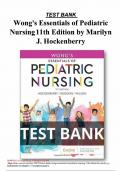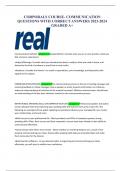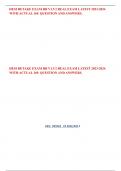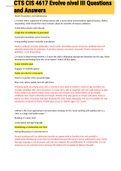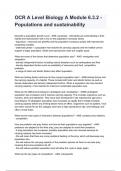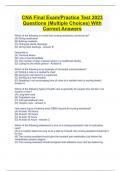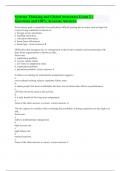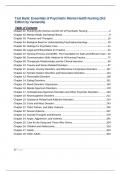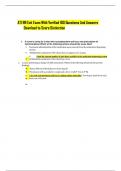Exam (elaborations)
TEST BANK Wong's Essentials of Pediatric Nursing 11th Edition by Marilyn J. Hockenberry
- Course
- Institution
- Book
Chapter 01: Children, Their Families, and the Nurse Evolve Resources for Wong’s Essentials of Pediatric Nursing, 11th Edition 1. The nurse would include which associated risk when planning a teaching session about childhood obesity? a. b. C. d. Type I diabetes Respiratory disease Celia...
[Show more]
